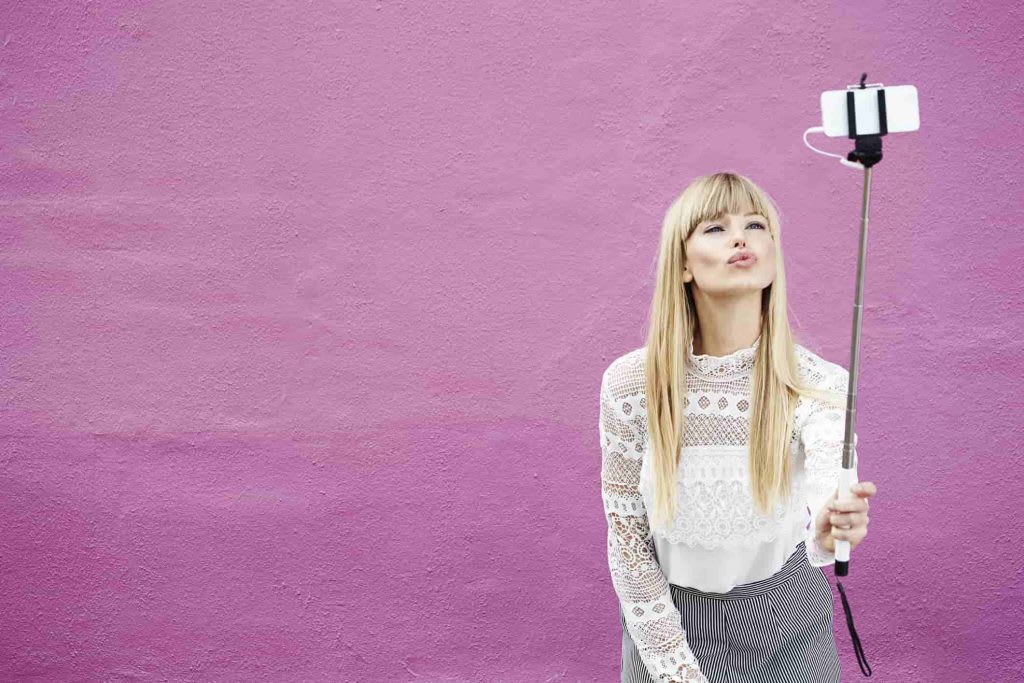
Your Guide to Amazing iPhone Photography
You’ve clicked all over the Internet, you’ve researched the legal ways to source stock photography for your website and where to find photos for your blog, and you’ve even figured out what gallery plugin you want to use on your WordPress site, but you still just can’t find that right image — the one that would be perfect for your latest blog post. You have an idea of what you want in your head but it doesn’t seem to exist and you don’t have time to search any more stock photo sites for free or cheap photos.
Now, you’re considering taking your own iPhone photos for your blog and you’re not quite sure where to start.
Don’t worry!
If you’re wondering how to get started with iPhone photography for your website or blog that reflects your creative vision and brand, you’re in luck. Today I’m sharing 13 iPhone photography tips that will help you take better photographs and create better imagery for your website.
Let’s get started.
1. Take More Photos Than You Need
Ask any professional photographer and they’ll tell you to get that one perfect image, often they have to take a ton of photos. If you’ve ever taken a family vacation, you’ve experienced the same thing — if you take 100 photos, about 10 will be amazing. With this in mind, be sure to take far more images than you need so you have lots of choices.
For example:
- Take photos at different angles and from different sides
- Take horizontal photos and vertical (portrait) photos — most websites use horizontal images for featured images, but you may also need vertical images for Pinterest
- Take photos close up showing detail
- Take photos farther way with lots of space around the subject
- Consider changing the background, adjusting the composition, and altering the lighting, taking more photos with each change
2. Zoom Out And Include Negative Space
Do yourself a favor and back up, zoom out, and include negative space in your images. Negative space is the space around and between the subject of an image. Remember that you can always zoom in and/or crop the image later, but you won’t be able to zoom out. Negative space also works in your favor if your website automatically crops images or parts of images are cropped on mobile devices because it will help prevent important parts of your images from being cut off.
3. Use The Rule Of Thirds
If you’re using an iPhone for photography, there is a grid option available in the camera settings that adds a 3×3 grid on the screen. The grid divides the image into three horizontal rows and three vertical columns and the grid lines help you compose better photos by using the rule of thirds. The rule of thirds states that a photo is compositionally more interesting if the important elements of the image lie on one of the grid lines or their intersections.
4. Get a Tripod
Whether you’re shooting stills of products, putting together the perfect flat-lay, or snapping a photo of yourself, a tripod is going to be a necessity. Using a tripod will keep you hands-free to create the perfect image (or fix your hair) and ensure your images are crisp and clear.
5. Get The Right Light
While you can invest in a professional lighting kit, a selfie light, or a white light box for product shots, you can also get stunning photos using an iPhone without spending any money by leveraging natural light. Take photos during the day and use sunlight to light your photos.
- If taking photos inside, place the subject of the photo near a window. If the window is in direct sunlight and you want a softer light, cover it with a sheer curtain or tape a big piece of white tissue paper to the window.
- If taking photos outside, try to do it in the morning or evening when the sun isn’t directly overhead and the light is softer, or if you only have mid-day to take your photos, look for full shade to avoid harsh shadows.
- Skip the flash. First, the flash on iPhones isn’t very strong, sometimes it causes weird color issues, and it isn’t very flattering. Second, the flash, in general, is too strong and can often wash out the subject or cause a weird reflection.
6. Use A Selfie Stick
While you wouldn’t be caught dead using a self-stick in public, using one to compose the perfect photo of yourself and your surroundings can be a lot easier than using a tripod and a remote and getting up and down a million times to check the photo — and it’s definitely better than asking someone to take your photo only have it come out terribly. Also, if you’re one of those people who prefers your photos taken from a high angle because it’s more flattering, a selfie stick will be a better choice than a tripod.

7. Leverage Video Stills
Having a hard time getting the image you want with the selfie stick? Out in public or a crowded area and don’t want to use a selfie stick? Don’t trust the person you’re with to take a great photo? Skip the pressure of getting just the right image and shoot a video instead. Use a tripod or ask a friend to take the video, then walk in front of the camera, hold a few different poses, moving slowly between them, and grab a screenshot of the perfect moment from the video.
8. Keep It Simple
The internet is bursting with content, websites are cluttered with ads, promotions, images, and calls to action, and social media is one big pit of distraction. Stand out from the crowd and elevate the visuals for your website by keeping your images simple and clean. Look for simple backgrounds, keep the image focused on one thing, and remove any clutter you can.
9. Be Aware Of Contrast
Contrast can be a powerful tool to create striking images, but if you plan on adding text to your images, be careful to avoid taking photos with too much contrast. If parts of the image are very dark and parts are very light, you’ll have a hard time ensuring that the text on top of the image is easy to read.
10. Use Your Hands
Skip the posed, smiling face looking directly at the camera. In fact, consider skipping faces altogether in your photos and instead focus on your hands or the hands of a friend. Take photos of “hands in action” — this iPhone photography approach has a human element, show the person doing something in context, and keeps the focus on the action being taken and not the person.
11. Use Your Brand Colors
When choosing what you’re going to take a photo of, what you’re going to wear in a photo, or what the composition of a photo should be, think about your brand colors. Work your brand colors into your photographs so they feel like a purposeful, natural part of your website and look like your brand.
For example: If you’re taking a photo of someone writing in a journal you could:
- Have their nails painted your brand color
- Have them wear a bracelet in your brand color
- Buy a journal in your brand color
- Use a pen that is your brand color
- Place a coffee mug that’s your brand color in the photo
12. Don’t Be So Literal
When brainstorming ideas for blog photos and website photos, avoid being too literal with your images. Don’t be the person who gets a Scrabble game, spells out the topic of their blog post, and takes a photo. That’s boring, obvious, and lazy, and it won’t capture much attention online. Instead, think about the concept you’re communicating and what else communicates the same concept.
13. Buy Some Foam Core
Many lighting kits come with a white reflective board and there’s a reason. A simple piece of white foam core (or two) can make a big difference when shooting flay-lay images and product shots by creating a white surface and/or white background. White foam core can also be used to reflect light onto the subject of the photo.
For example: If you place a light to the right of a product and a sheet of foam core to the left of the product, the light will bounce off the foam core onto the product. This creates more even lighting and avoids ending up with a photo where one side of the photo is light and one side is dark.
Make Stunning Photos Load Quickly With Managed WordPress
Liquid Web’s Managed WordPress Hosting provides you a reliable hosting platform that’s lightning fast and made for bloggers. It includes image compression (so your stunning iPhone photography you took looks great and loads fast), automatic updates for plugins and the platform, automatic daily backups, automatic SSL, and no pageview/traffic limits – exactly what your blog needs to grow.
[ad_2]
Source link







